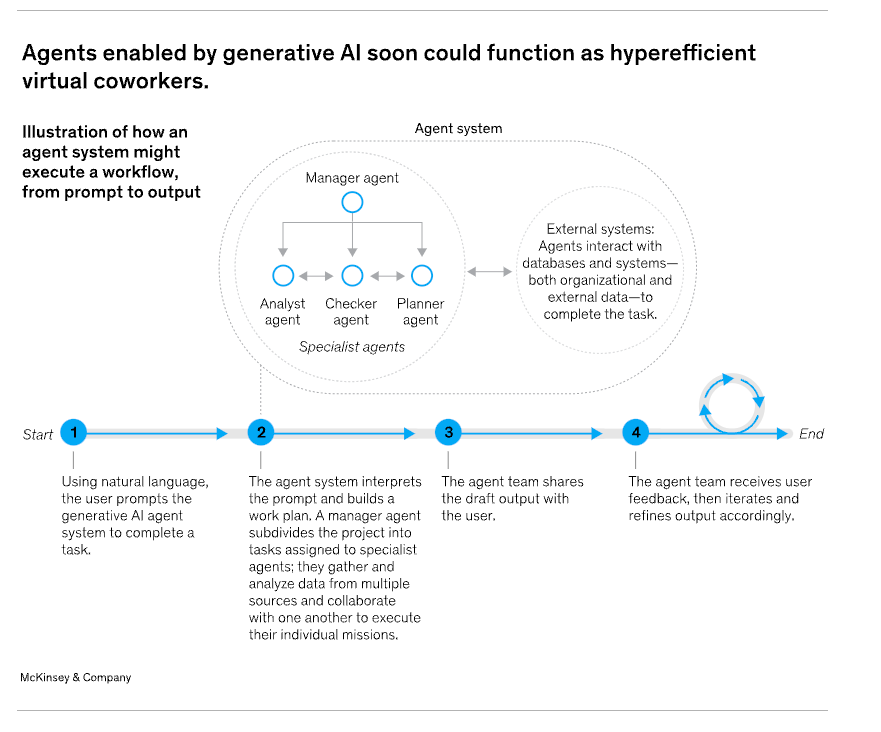Agentforce: Balancing the Promise of Low-Code Efficiency with Domain-Specific Realities
Salesforce Agentforce has garnered a lot of attention for its potential to improve the development of AI driven agents. Recent headlines advertised that “Salesforce is hiring 1000 AE’s to help sell AI”.
Salesforce wants to enable quick builds with low-code or no-code tools and promises to democratize development while making advanced capabilities accessible to non-technical users. However, as we dig deeper into implementation, critical issue often arise related to domain-specific data, rules and workflows that demand custom actions requiring Apex or other coding solutions. Reality is more complex than product marketing literature.
How does Agentforce reconcile this promise of simplicity with the reality of organizational complexity?
The Promise of Agentforce: Low-Code, Faster Innovation
Per Salesforce, at its core Agentforce is designed to improve AI agent development by removing the barriers of extensive coding. With prebuilt templates, drag-and-drop interfaces, and simple configuration tools, businesses can quickly deploy AI agents for customer support, internal operational tasks, and more.
Key benefits include:
Efficiency: Faster time to market for AI agents, as heavy development cycles are reduced.
Accessibility: Non-technical stakeholders can take part in agent design and testing without requiring programming knowledge.
Flexibility: Agentforce integrates seamlessly into the Salesforce ecosystem, leveraging existing CRM data to create powerful, context-aware workflows.
For simple use cases, this approach may indeed work well. Organizations can address common challenges like automating FAQs, lead qualification, or data entry with minimal effort.
Think of it as an Einstein Chatbot on steroids.
The Reality Check: When "No-Code" Falls Short
Despite its many strengths, Agentforce encounters limitations in real-world scenarios. Every business operates within its own unique processes, domain-specific rules, and data idiosyncrasies that cannot always be addressed through declarative tools alone.
Here are a few common challenges:
Custom Business Logic: Many companies require agents to process nuanced workflows or actions that cannot be modeled declaratively. For instance, an agent that adjusts pricing dynamically based on market factors or inventory levels may need highly specific, custom logic.
Integration Complexities: Connecting Agentforce to external systems, especially legacy applications or third-party APIs, necessitates Apex coding to handle data transformations and error management.
Scaling with Domain Data: As organizations scale, the volume of domain-specific data and rules grows, making declarative tools cumbersome or insufficient to manage advanced requirements.
Think of it this way: low code works well with standard, “out of the box” aspects of Salesforce but as soon as you get into domain specific rules, external data and processes, you are quickly faced with custom actions using code.
In such cases, low-code quickly evolves to "low-code-plus-Apex," requiring skilled developers to implement and maintain these customizations efficiently. This doesn't negate the value of Agentforce, but it does complicate the narrative of simplicity.
Bridging the Gap: XCentium Combines Efficiency with Skill
To maximize the benefits of Agentforce while addressing its limitations, organizations can adopt several strategies:
Reusable Components: Build libraries of reusable Apex code and declarative templates to streamline the creation of custom actions. This reduces redundancy and speeds up future development.
Training & Collaboration: Encouraging collaboration between developers and non-technical users ensures that Apex is only applied where necessary, with declarative tools utilized wherever possible.
Hybrid Approach: Strategically use Apex for domain-specific needs while maintaining low-code in other areas as much as possible. This model can balance the best of both approaches and follows the adage that many CIO’s like to use “better to configure out of the box than custom build “.
If one was to believe the headlines, agents will miraculously solve a ton of business problems. Just look at the following ideal scenario of an agent-based system. This simple diagram hides complexities found even in fully “no-code” solutions. Just take a look at the Checker Agent. It verifies the work. What the diagram doesn’t show is that in real life a Checker Agent maybe called on to run dozens if not hundreds of specific checks and tests to make sure the output of the system is correct. Its work to create and refine these tests. The agent doesn’t do that on its own.
This simple diagram hides complexities found even in fully “no-code” solutions. Just take a look at the Checker Agent. It verifies the work. What the diagram doesn’t show is that in real life a Checker Agent maybe called on to run dozens if not hundreds of specific checks and tests to make sure the output of the system is correct. Its work to create and refine these tests. The agent doesn’t do that on its own.
If the value of an agent system is its ability to work alongside humans, then the output needs to be correct. It’s one thing to have a group of agents try to write Shakespeare but it’s a completely different situation when a group of agents is to participate in a business that costs you real dollars. As we build more AI solutions, customers develop a deeper understanding of the amount of work needed to, for example, get a “Checker Agent” to run at the appropriate level of detail and catch the appropriate errors.
Salesforce understands this problem and is working on releasing the Agentforce Testing Center in December of 2024.
Salesforce Partners play a crucial role in helping organizations navigate the complexities of adopting and scaling Agentforce. By leveraging our expertise in Salesforce development and AI integrations, we provide value at every stage of the journey, from strategy to execution.
Implementation partners help organizations assess their specific needs and map out where Agentforce fits best within their operations. For domain-specific rules or workflows that go beyond declarative capabilities, we design and implement robust custom actions using Apex or other coding solutions to ensure scalability and efficiency
Our team has deep experience in connecting Salesforce to legacy systems, third-party APIs, and other external platforms, ensuring seamless data exchange and workflow automation across the organization. Regardless of whether the data resides in SF DataCloud or an external ERP system or some other cloud system like AWS / Azure.
Beyond implementation, we equip internal teams with the knowledge and best practices to leverage Agentforce effectively, enabling them to maintain and expand functionality over time.
At the heart of our work is the ability to bridge the gap between the promise of Agentforce and the reality of organizational complexity. We don't just deliver solutions—the XCentium team empowers businesses to adopt a balanced, hybrid approach that drives both innovation and operational excellence.
A Balanced Perspective on Agentforce
Salesforce Agentforce is a powerful tool that democratizes access to AI agent creation. For organizations with straightforward needs, its low-code/no-code promise delivers on its potential. However, those organizations are rare. By adopting a balanced approach that leverages the simplicity of low code while strategically using custom actions and code where necessary, a majority of businesses can harness the full potential of Agentforce to drive innovation and efficiency.
References:
“Salesforce hiring for AI Push “(Bloomberg, Nov 2024)
Agentforce Testing Center - https://www.salesforce.com/news/press-releases/2024/11/20/agentforce-testing-center-announcement/
Salesforce Developer Documentation: https://developer.salesforce.com
"The Pros and Cons of Low-Code Platforms" (Forbes, 2023)
“Why are agents the next frontier of generative AI” (McKinsey, Jul 2024)

